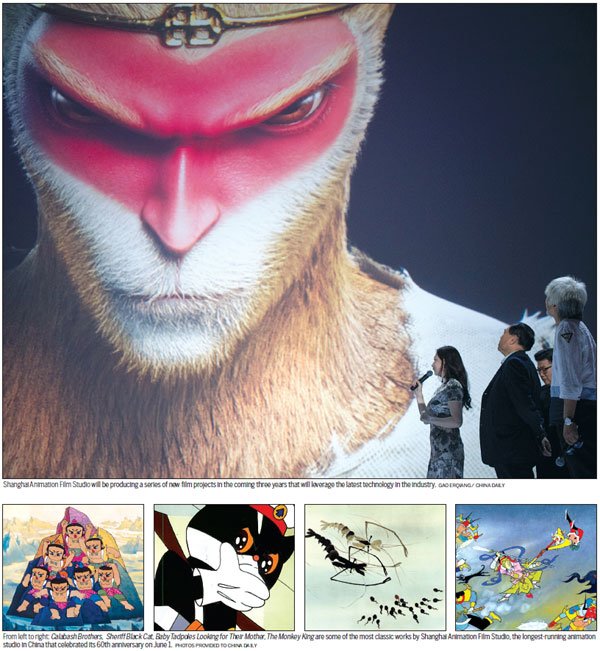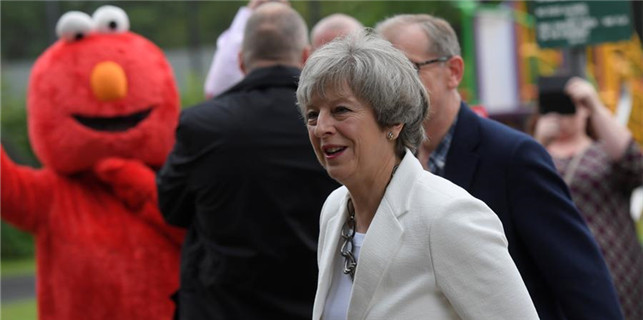China's superhero factory

Formerly a prolific studio responsible for creating iconic characters well-loved by Chinese audiences, Shanghai Animation Film Studio is now looking to regain its past glory with a focus on originality and innovation
Before Chinese children discovered Batman and Wonder Woman, their idols were the Calabash Brothers, a team of seven superheroes, each with his own special ability, on a mission to save their grandfather from evil monsters.
There was also the Sheriff Black Cat, an expert at cracking criminal cases in a Zootopia-like realm, as well as cartoon characters from Chinese folklore and classic literature such as the legendary Monkey King.
The animated form of these fantasy characters were created by Shanghai Animation Film Studio (SAFS), the longest-running animation studio in China that celebrated its 60th anniversary on June 1.
The studio's earlier masterpieces such as Baby Tadpoles Looking for Their Mother, The Nine-colored Deer and Feelings of Mountains and Waters received global acclaim, winning prestigious awards at film festivals in Cannes, Venice and Berlin.
"We've experienced two creative peaks in China's animation production, first in the 1960s, then in the 1980s, earning ourselves acclaim in the international animation scene," said SAFS director Zheng Hu during a forum celebrating the studio's 60th anniversary in Shanghai.
History of animation in China
China started producing animations as early as the 1920s when Wan Laiming and his three younger brothers created Uproar in the Studio, a film about a mischievous paper man messing up an artist's studio. In 1940, the quartet created Princess Iron Fan, the first animation film that had dialogue. When SAFS was founded in 1957, the brothers were among the most important artists in the studio and they set the goal of creating uniquely Chinese animated stories by exploring diverse styles and expressions from traditional Chinese art.
Among these artists was Yan Dingxian, who after mimicking the facial expressions of the Monkey King in a mirror decided to design the character with a peach-shaped patch of red in the middle of its face. Yan, who is 81 years old today, recalled that in 1960, when the studio kicked off the Monkey King project, renowned artists were invited from Beijing to create the prototype designs for the characters and settings. The studio had even gotten Peking opera artists to illustrate to the cartoon makers how they played the Monkey King on the stage.
Yan and his colleagues even learned and practiced fighting techniques using the red stick the Monkey King wields so as to better understand the movements which they would later translate into animation.
Today, the original edition of The Monkey King ranks among the top 100 Chinese films on Douban.com, one of the leading film and reading portals in China. The Monkey King that was designed by Yan is still one of the most iconic cartoon images in the country and can often be found on bank cards, T-shirts and even fast food meal packages.
Determined to find a distinctive Chinese style of their own, the staff at SAFS experimented with using ink painting in the production process, recalled artist Duan Xiaoxuan.
"Our rich Chinese culture provided endless resources for creation. We were intrigued by ink art because it was the most distinctive expression of Chinese aesthetics," said the 83-year-old.
It took Duan and her colleagues 30 days to create the first 50 ink-style animation frames. The team would go on to create the first ink-style animation feature Baby Tadpoles Looking for Their Mother which was released in 1961. Duan added that ink-style animations by SAFS have won 18 international prizes in the past.
However, China's animation industry went through nearly a decade of sluggish development starting from the 1990s, losing audiences to Japanese and American cartoons. While leading animation studios in the world would invest millions of dollars in the making of a new film, China's animation sector suffered from a lack of funding and talents, as well as weak support from administrative departments, said Li Yang, a veteran voice actor who rose to fame for his portrayals of Donald Duck and the Monkey King in Mandarin.
In the 2000s, however, SAFS started combining the techniques and styles of established artists, such as Qi Baishi, Li Keran and Cheng Shifa, which it had been using all the while, with CGI technology and started to regain its luster as an animation outfit. Its efforts had not gone unnoticed as it was later commissioned to create short films for the World Expo 2010 held in Shanghai.
















